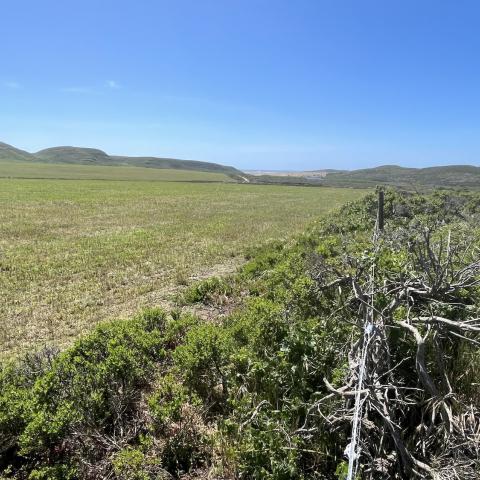
The Pastoral Zone is a bucolic area of Point Reyes National Seashore where cattle ranching is permitted/Karen Klitz
The National Park Service must consider a future that doesn’t include beef and dairy cattle ranching at Point Reyes National Seashore and will conduct a public environmental review of how the those operations, some of which date to the 1800s, impact the park’s California coastline under a settlement agreement filed Wednesday with the U.S. Department of Justice.
Last February, three environmental groups – Resource Renewal Institute, the Center for Biological Diversity, and the Western Watersheds Project – filed a lawsuit claiming the Park Service violated laws, including the National Environmental Policy Act, by authorizing year-round livestock ranching without without preparing an environmental analysis of its impact on Point Reyes.
If accepted by the U.S. District Court, the settlement calls for Point Reyes officials to prepare an amendment to its General Management Plan, last updated in 1980, and complete an environmental impact statement for approximately 28,000 acres in the national seashore and the north district of Golden Gate National Recreation Area, including all lands currently leased for ranching, within four years. The Park Service will consider a full range of alternatives, including ending or reducing beef and dairy cattle ranching in Point Reyes.
“This settlement is a victory for the public and Point Reyes National Seashore, and sets a precedent for protecting our national heritage by guaranteeing citizens a voice in how their public lands are managed,” Deborah Moskowitz, president of the Marin-based Resource Renewal Institute, said in a release. “Past generations fought to create the seashore — this settlement helps safeguard this precious public asset for future generations."
During the upcoming planning process, cattle ranching will continue under current grazing leases. Approximately 15 private ranching enterprises, some passed down within the family for generations, graze beef and dairy cattle on 24 lease units, which make up more than 18,000 of the park’s 71,000 acres. The settlement allows the Park Service to issue leases or permits to commercial ranchers for terms not to exceed five years from the date the agreement is approved. These interim leases provide greater certainty to ranchers than the one-year authorizations the Park Service has been issuing while developing a Ranch Comprehensive Management Plan, which is now on hold.
"We are pleased that park ranchers, local government, environmental groups, and the park were able to come together and agree to move forward on this important topic," Steve Mietz, acting superintendent of Point Reyes National Seashore, said in a release. "This approach initiates a comprehensive, robust, and durable planning process to define future uses of these lands managed by the park while providing interim stability and authorizations for park ranchers during the new planning process."
In addition to the plaintiffs, signatories to the agreement include the National Park Service, park ranchers, the County of Marin, and the Point Reyes Seashore Ranchers Association.
The settlement ceases work on a Ranch Comprehensive Management Plan, which has been in progress since 2014 but did not include an alternative that would completely remove ranching from the park. It proposed extending 20-year leases that would give ranches security and incentive to invest back into the property. In March, cultural resources staff completed work needed to nominate the ranches for the National Register of Historic Places. The plan also called for management of a growing population of tule elk that have been a nuisance to some ranchers.
“This is a win for those of us who don’t want to see tule elk evicted from the park and for anyone concerned about damage to wetlands, streams, and wildlife habitats from cattle grazing,” Jeff Miller, from the Center for Biological Diversity, said in a release. “The public will get its long-overdue opportunity to weigh in on where native wildlife and public access should trump commercial cattle ranching on Point Reyes park lands.”
The tule elk were thought to be extinct in the 1800s, primarily due to overhunting and displacement by cattle. Around 30 animals were discovered in 1874, and efforts were made to save the species. State and federal legislation led to 10 animals being reintroduced at a 2,600-acre fenced enclosure on Tomales Point in 1978 in an attempt to restore natural systems historically found at Point Reyes. After a period of slow growth, the population exploded to more than 500 in the 1990s, and ranchers pointed to studies that that number far exceeded optimal carrying capacity.











Add comment